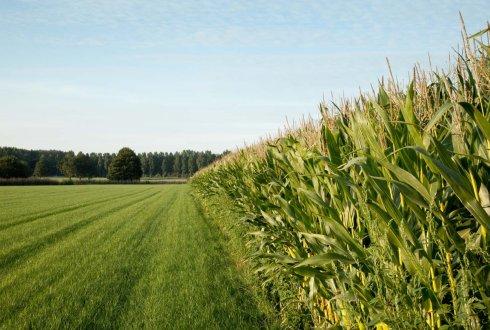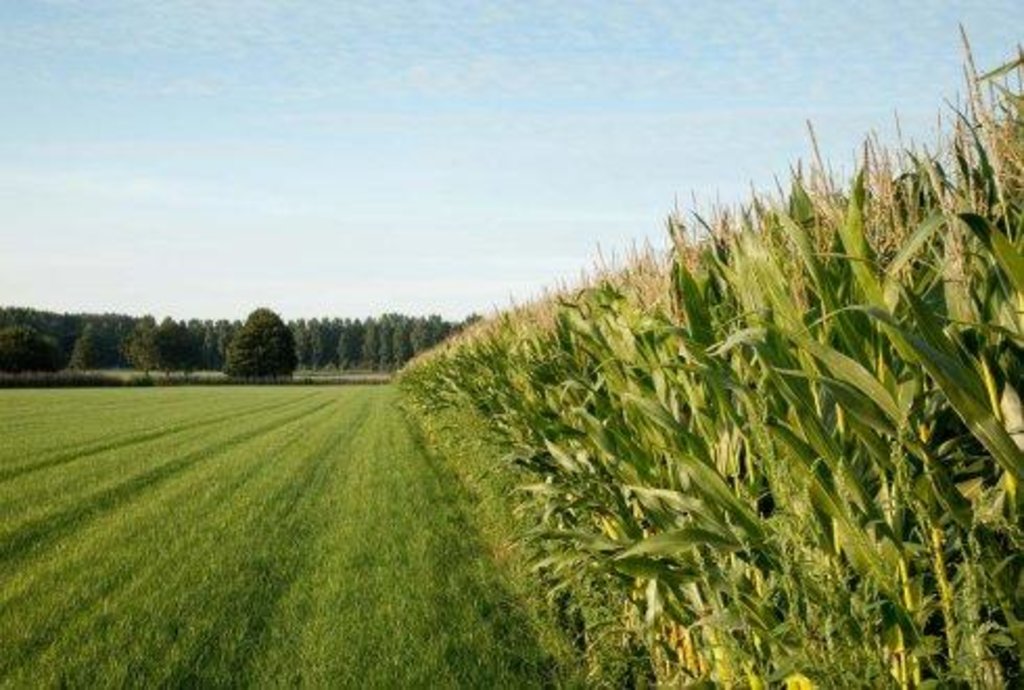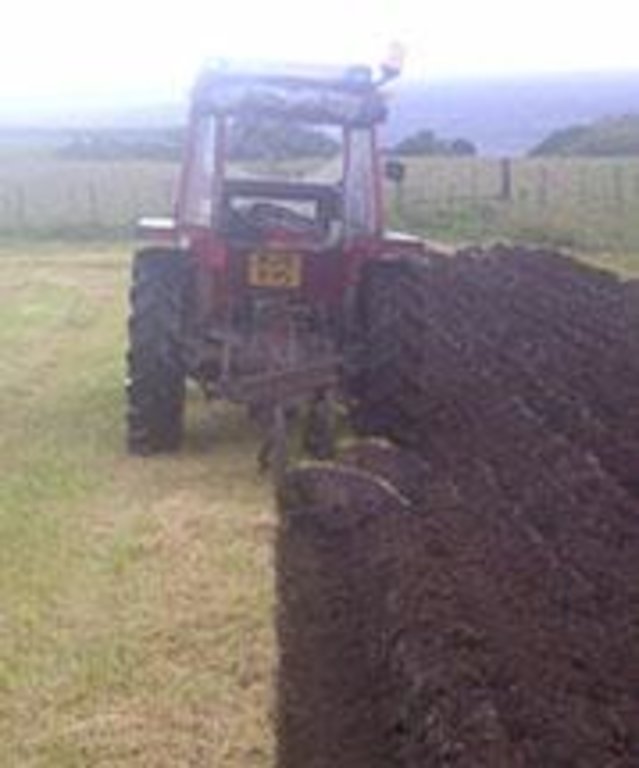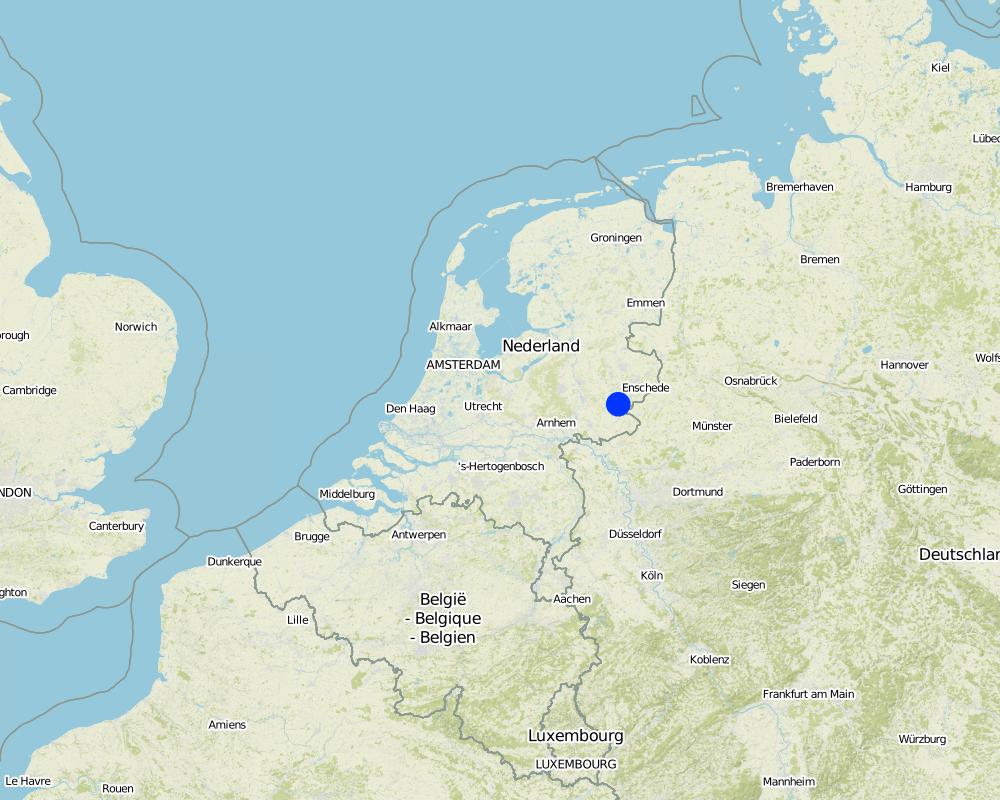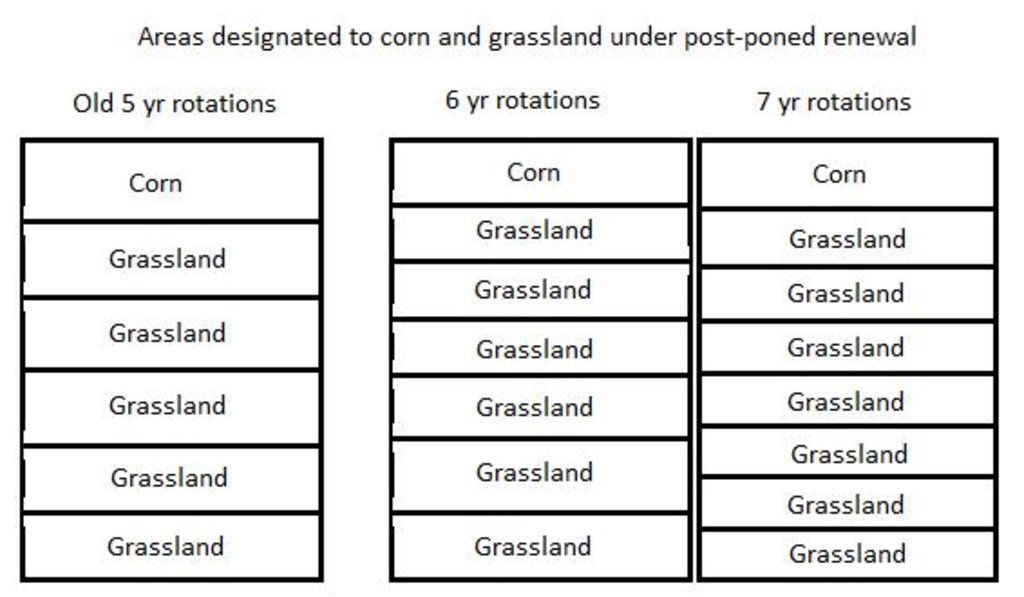Postpone grassland renewal [Pays-Bas]
- Création :
- Mise à jour :
- Compilateur : Jason Stuka
- Rédacteur : –
- Examinateurs : Fabian Ottiger, Alexandra Gavilano
Uitstellen van graslandvernieuwing
technologies_1662 - Pays-Bas
Voir les sections
Développer tout Réduire tout1. Informations générales
1.2 Coordonnées des personnes-ressources et des institutions impliquées dans l'évaluation et la documentation de la Technologie
Spécialiste GDT:
Smit Annemieke
Wageningen Environmental Research (Alterra)
Pays-Bas
Spécialiste GDT:
Rienks Willem
Rom3D
Pays-Bas
Spécialiste GDT:
Leever Henk
Hoeduurzaam
Pays-Bas
Nom du projet qui a facilité la documentation/ l'évaluation de la Technologie (si pertinent)
Preventing and Remediating degradation of soils in Europe through Land Care (EU-RECARE )Nom du ou des institutions qui ont facilité la documentation/ l'évaluation de la Technologie (si pertinent)
Hoe Duurzaam - Pays-BasNom du ou des institutions qui ont facilité la documentation/ l'évaluation de la Technologie (si pertinent)
Wageningen Environmental Research (Alterra) - Pays-BasNom du ou des institutions qui ont facilité la documentation/ l'évaluation de la Technologie (si pertinent)
Vitens - Laat Water Voor Je Werken - Pays-BasNom du ou des institutions qui ont facilité la documentation/ l'évaluation de la Technologie (si pertinent)
Ministerie van Economische Zaken - Pays-BasNom du ou des institutions qui ont facilité la documentation/ l'évaluation de la Technologie (si pertinent)
Gemeente Berkelland - Pays-Bas1.3 Conditions relatives à l'utilisation par WOCAT des données documentées
Le compilateur et la(les) personne(s) ressource(s) acceptent les conditions relatives à l'utilisation par WOCAT des données documentées:
Oui
1.5 Référence au(x) Questionnaires sur les Approches de GDT (documentées au moyen de WOCAT)
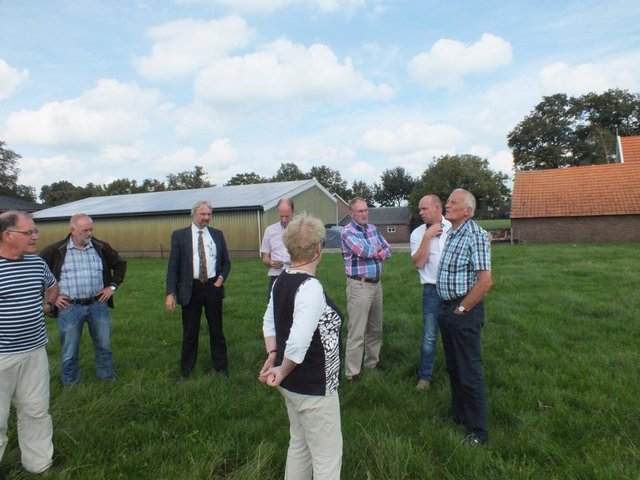
Regional process, social innovation [Pays-Bas]
Social innovation for sustained soil organic matter, clean drinking water and sustainable crop production
- Compilateur : Simone Verzandvoort
2. Description de la Technologie de GDT
2.1 Courte description de la Technologie
Définition de la Technologie:
Postponing the timing of ploughing a grassland field by one or two years to reduce nutrient losses and organic matter decomposition.
2.2 Description détaillée de la Technologie
Description:
On the sandy soils in this part of The Netherlands permanent grassland seems the best measure to increase the organic matter content of the soil, to reduce the leaching of minerals and to reduce loss of soil moisture.
Customary maintenance of grassland fields is to plough and reseed or rotate the grass every 5 years. 5 years is the minimum length of time required by legislation. For growth and field rotation purposes, many farmers have preference to rotate fields in intervals less than 5 years. Under this technology, farmers instead wait 6 or 7 years before ploughing.
Purpose of the Technology: Ploughing grasslands increases the breakdown and decomposition of organic matter in soils. Farmers post-pone ploughing to increase soil organic matter content and reduce losses.
Establishment / maintenance activities and inputs: A well established permanent grassland requires good drainage, frequent liming (possibly from residual products from water purification), deep rooting grass, reseeding after 10-15 years, and fertilisation using sufficient organic manure.
Natural / human environment: Dairy farmers on sandy soils in the eastern part of The Netherlands. In the pilot Gezond Zand 44 farmers participated, owning 720 ha agricultural land, of which 344 in use as permanent grassland.
2.3 Photos de la Technologie
2.5 Pays/ région/ lieux où la Technologie a été appliquée et qui sont couverts par cette évaluation
Pays:
Pays-Bas
Région/ Etat/ Province:
Gelderland
Autres spécifications du lieu:
Haarlo - Oude Eibergen
Spécifiez la diffusion de la Technologie:
- répartie uniformément sur une zone
S'il n'existe pas d'informations exactes sur la superficie, indiquez les limites approximatives de la zone couverte:
- 1-10 km2
Commentaires:
In entire area there is 344 ha of grassland owned by 44 farmers. Only 2 of those farmers implemented the technology.
Map
×2.6 Date de mise en œuvre de la Technologie
Si l'année précise est inconnue, indiquez la date approximative: :
- il y a entre 10-50 ans
2.7 Introduction de la Technologie
Spécifiez comment la Technologie a été introduite: :
- par le biais de projets/ d'interventions extérieures
3. Classification de la Technologie de GDT
3.2 Type(s) actuel(s) d'utilisation des terres, là où la Technologie est appliquée

Pâturages
Pâturage extensif:
- Ranching
Pâturage intensif/ production fourragère :
- Affouragement en vert/ zéro-pâturage
- Prairies améliorées
Commentaires:
Major land use problems (compiler’s opinion): Decrease of soil organic matter content.
Major land use problems (land users’ perception): The group of farmers in the area experience decreasing organic matter content in soil.
Ranching: Yes
Cut-and-carry/ zero grazing: farmers also keep cattle in stable to prevent unequal grazing and dispersed manuring
Improved pasture: Yes
Number of growing seasons per year: 1
Longest growing period in days: 250 Longest growing period from month to month: March - November
Livestock density: > 100 LU /km2
3.4 Approvisionnement en eau
Approvisionnement en eau des terres sur lesquelles est appliquée la Technologie:
- pluvial
3.5 Groupe de GDT auquel appartient la Technologie
- perturbation minimale du sol
3.6 Mesures de GDT constituant la Technologie

modes de gestion
- M2: Changement du niveau de gestion / d'intensification
Commentaires:
Main measures: management measures
3.7 Principaux types de dégradation des terres traités par la Technologie

dégradation chimique des sols
- Cn: baisse de la fertilité des sols et réduction du niveau de matière organique (non causée par l’érosion)
Commentaires:
Main type of degradation addressed: Cn: fertility decline and reduced organic matter content
Main causes of degradation: soil management (ploughing intensive grassland renewal)
Secondary causes of degradation: crop management (annual, perennial, tree/shrub) (rotation with more corn and less grassland)
3.8 Prévention, réduction de la dégradation ou réhabilitation des terres dégradées
Spécifiez l'objectif de la Technologie au regard de la dégradation des terres:
- réduire la dégradation des terres
Commentaires:
Main goals: mitigation / reduction of land degradation
4. Spécifications techniques, activités, intrants et coûts de mise en œuvre
4.1 Dessin technique de la Technologie
Spécifications techniques (associées au dessin technique):
Demonstrating area designated to corn and designated to grassland under old management of renewing grasslands every 5 years and comparing to the area under the new technology of renewal every 6 or 7 years.
Location: Wageningen. Gelderland
Date: March 20, 2015
Technical knowledge required for field staff / advisors: moderate (knowledge is required on the maintenance of permanent grassland, the proportion of grassland in the total farm, the frequency of reseeding and rotations with arable crops, in particular for grassland)
Technical knowledge required for land users: moderate (knowledge is required on the maintenance of permanent grassland, the proportion of grassland in the total farm, the frequency of reseeding and rotations with arable crops, in particular for grassland)
Main technical functions: Reduce decomposition of organic matter
Secondary technical functions: increase in organic matter, increase of biomass (quantity)
Change of land use practices / intensity level: Plough grassland every 6 to 7 years instead of every 5 years.
Major change in timing of activities: Plough grassland every 6 to 7 years instead of every 5 years.
Auteur:
Jason Stuka, Wageningen University
4.6 Coûts et intrants nécessaires aux activités d'entretien/ récurrentes (par an)
Commentaires:
Information on costs for the technology are not yet available, and therefore no information on costs was entered into section 2.6.
Costs involved with postponing grassland renewal include the costs of yield foregone from rotations with arable crops that have not taken place, and costs of manuring of the grassland.
Costs avoided include all costs of management operations and inputs associted with rotations of grassland and arable crops that would have taken place in the life cycle of the permanent grassland (6-7 till 15 years).
Benefits include 1320 kg of additional DM/ha, or € 145,-/ha additional revenues.
4.7 Facteurs les plus importants affectant les coûts
Décrivez les facteurs les plus importants affectant les coûts :
The life cycle of permanent grassland determines both the costs foregone due to missed yields from shorter term rotations with arable crops and costs avoided due to saved operations and inputs on shorter term rotations which have not taken place.
5. Environnement naturel et humain
5.1 Climat
Précipitations annuelles
- < 250 mm
- 251-500 mm
- 501-750 mm
- 751-1000 mm
- 1001-1500 mm
- 1501-2000 mm
- 2001-3000 mm
- 3001-4000 mm
- > 4000 mm
Spécifications/ commentaires sur les précipitations:
182 days of precipitation annually
Zone agro-climatique
- subhumide
Thermal climate class: temperate. Mean monthly temperatures vary between 2-17 °C (LGP 240-269 days, mean monthly temperatures vary between 2-17 °C)
5.2 Topographie
Pentes moyennes:
- plat (0-2 %)
- faible (3-5%)
- modéré (6-10%)
- onduleux (11-15%)
- vallonné (16-30%)
- raide (31-60%)
- très raide (>60%)
Reliefs:
- plateaux/ plaines
- crêtes
- flancs/ pentes de montagne
- flancs/ pentes de colline
- piémonts/ glacis (bas de pente)
- fonds de vallée/bas-fonds
Zones altitudinales:
- 0-100 m
- 101-500 m
- 501-1000 m
- 1001-1500 m
- 1501-2000 m
- 2001-2500 m
- 2501-3000 m
- 3001-4000 m
- > 4000 m
Commentaires et précisions supplémentaires sur la topographie:
Altitudinal zone: 0-100 m a.s.l. (up to 45 metres a.s.l.)
Slopes on average: Gentle (only incidentally)
5.3 Sols
Profondeur moyenne du sol:
- très superficiel (0-20 cm)
- superficiel (21-50 cm)
- modérément profond (51-80 cm)
- profond (81-120 cm)
- très profond (>120 cm)
Texture du sol (de la couche arable):
- grossier/ léger (sablonneux)
- moyen (limoneux)
Matière organique de la couche arable:
- abondant (>3%)
- moyen (1-3%)
Si disponible, joignez une description complète du sol ou précisez les informations disponibles, par ex., type de sol, pH/ acidité du sol, capacité d'échange cationique, azote, salinité, etc.
Soil depth on average: Deep (A en B horizons up till 40 cm in Gleyic Podzols and Umbric Gleysols (ca 75% of the area). Hardly any soil organic matter below 15 cm. Rooting depth is up to 80 cm.) and very deep (deep topsoils rich in organic matter in Fimic Anthrosols (12% of the area))
Soil texture: Coarse/light ( Most soils have a sandy texture due to the substrate consisting of cover sands) and medium (soils in former creek valleys contain loam (Umbric Gleysols))
Soil fertility is low (most soils have a low fertility due to the sandy substrate (specifically the Gleyic Podzols, ca 40% of the area). and very high (fimic Anthrosols originating from application of farmyard manure since medieval times.)
Topsoil organic matter is medium (The purpose of the pilot project is to increase soil organic matter)
Soil drainage/infiltration is good (deep ground water. Sandy soils.) and medium (some shallow groundwater)
Soil water storage capacity is medium (dependent on soil organic matter content)
5.4 Disponibilité et qualité de l'eau
Profondeur estimée de l’eau dans le sol:
5-50 m
Disponibilité de l’eau de surface:
moyenne
Qualité de l’eau (non traitée):
faiblement potable (traitement nécessaire)
5.5 Biodiversité
Diversité des espèces:
- moyenne
5.6 Caractéristiques des exploitants des terres appliquant la Technologie
Orientation du système de production:
- subsistance (auto-approvisionnement)
Revenus hors exploitation:
- moins de 10% de tous les revenus
Niveau relatif de richesse:
- moyen
Individus ou groupes:
- individu/ ménage
Genre:
- hommes
Indiquez toute autre caractéristique pertinente des exploitants des terres:
Land users applying the Technology are mainly common / average land users
Difference in the involvement of women and men: Most outdoor farm operations are completed by men.
Population density: 10-50 persons/km2
Annual population growth: < 0.5%
100% of the land users are average wealthy and own 100% of the land.
Off-farm income specification: Some farmers are contractual workers. Wives of farmers often have a job, e.g. at the municipality or craft work. No B&B activities or educational services.
Market orientation is subsistence (grass is used to feed the cattle of dairy farmers, not sold)
5.7 Superficie moyenne des terres utilisées par les exploitants des terres appliquant la Technologie
- < 0,5 ha
- 0,5-1 ha
- 1-2 ha
- 2-5 ha
- 5-15 ha
- 15-50 ha
- 50-100 ha
- 100-500 ha
- 500-1 000 ha
- 1 000-10 000 ha
- > 10 000 ha
Cette superficie est-elle considérée comme de petite, moyenne ou grande dimension (en se référant au contexte local)?
- moyenne dimension
Commentaires:
Average grassland is 7.8 ha per household.
5.8 Propriété foncière, droits d’utilisation des terres et de l'eau
Propriété foncière:
- individu, avec titre de propriété
Droits d’utilisation des terres:
- loué
- individuel
Commentaires:
All agriculture land is owned by farmers. Some farmers lease their land to other farmers. There are some regulations on land uses set by communities.
5.9 Accès aux services et aux infrastructures
santé:
- pauvre
- modéré
- bonne
éducation:
- pauvre
- modéré
- bonne
assistance technique:
- pauvre
- modéré
- bonne
emploi (par ex. hors exploitation):
- pauvre
- modéré
- bonne
marchés:
- pauvre
- modéré
- bonne
énergie:
- pauvre
- modéré
- bonne
routes et transports:
- pauvre
- modéré
- bonne
eau potable et assainissement:
- pauvre
- modéré
- bonne
services financiers:
- pauvre
- modéré
- bonne
6. Impacts et conclusions
6.1 Impacts sur site que la Technologie a montrés
Impacts socio-économiques
Production
production fourragère
Commentaires/ spécifiez:
Expected. More grass, less corn. Overall less yield.
Revenus et coûts
dépenses pour les intrants agricoles
Commentaires/ spécifiez:
Expected. Not proven.
revenus agricoles
Commentaires/ spécifiez:
Uncertain. More grass but less corn.
charge de travail
Commentaires/ spécifiez:
Expected. Not proven.
Less rotation and management flexibility.
Impacts socioculturels
institutions communautaires
Commentaires/ spécifiez:
Created farmer's foundation
connaissances sur la GDT/ dégradation des terres
Commentaires/ spécifiez:
Farmers understanding ecological impacts.
apaisement des conflits
Commentaires/ spécifiez:
Farmers collaborating with water company
Improved livelihoods and human well-being
Commentaires/ spécifiez:
Dairy farmers have learned more about the importance of soil organic matter for their production systems, and about the consequences of soil management on soil organic matter and other aspects of soil health. This learning was brought by the exchange of knowledge between farmers and experts, and between farmers themselves. Farmers also profited from services provided to them by the farmers' foundations: shared investments (e.g. in the manure separator) and support in the application for subsidies to finance the SLM measure.
Impacts écologiques
Cycle de l'eau/ ruissellement
qualité de l'eau
Commentaires/ spécifiez:
Expected. Not proven yet.
ruissellement de surface
Commentaires/ spécifiez:
Expected. Not proven yet. Little to no
drainage de l'excès d'eau
Commentaires/ spécifiez:
Expected. Not proven yet.
Sols
couverture du sol
Commentaires/ spécifiez:
Not measured.
compaction du sol
Commentaires/ spécifiez:
Expected. Not proven yet.
cycle/ recharge des éléments nutritifs
Commentaires/ spécifiez:
Expected. Not proven yet.
matière organique du sol/ au dessous du sol C
Commentaires/ spécifiez:
Expected. Not proven yet.
Biodiversité: végétale, animale
biomasse/ au dessus du sol C
Commentaires/ spécifiez:
Not measured.
Réduction des risques de catastrophe et des risques climatiques
émissions de carbone et de gaz à effet de serre
6.2 Impacts hors site que la Technologie a montrés
capacité tampon/de filtration
Commentaires/ spécifiez:
Expected. Not proven yet.
6.3 Exposition et sensibilité de la Technologie aux changements progressifs et aux évènements extrêmes/catastrophes liés au climat (telles que perçues par les exploitants des terres)
Changements climatiques progressifs
Changements climatiques progressifs
| Saison | Augmentation ou diminution | Comment la Technologie fait-elle face à cela? | |
|---|---|---|---|
| températures annuelles | augmente | bien |
Extrêmes climatiques (catastrophes)
Catastrophes météorologiques
| Comment la Technologie fait-elle face à cela? | |
|---|---|
| pluie torrentielle locale | bien |
| tempête de vent locale | bien |
Catastrophes climatiques
| Comment la Technologie fait-elle face à cela? | |
|---|---|
| sécheresse | bien |
Catastrophes hydrologiques
| Comment la Technologie fait-elle face à cela? | |
|---|---|
| inondation générale (rivière) | bien |
Autres conséquences liées au climat
Autres conséquences liées au climat
| Comment la Technologie fait-elle face à cela? | |
|---|---|
| réduction de la période de croissance | bien |
6.4 Analyse coûts-bénéfices
Quels sont les bénéfices comparativement aux coûts d'entretien récurrents (du point de vue des exploitants des terres)?
Rentabilité à court terme:
neutre / équilibrée
Rentabilité à long terme:
légèrement négative
Commentaires:
Less frequent rotation and fertility for corn production, but better for soil health.
6.5 Adoption de la Technologie
Commentaires:
100% of land user families have adopted the Technology with external material support
2 land user families have adopted the Technology with external material support
6.7 Points forts/ avantages/ possibilités de la Technologie
| Points forts/ avantages/ possibilités du point de vue de l'exploitant des terres |
|---|
|
increases soil organic matter How can they be sustained / enhanced? continued implementation of the measures and subsidy or payment for environmental service to compensate foregone revenues if rotations with arabale crops would be inserted. |
|
increases grassland quality and yield in the long term; estimated added value of postponing grassland renewal is € 145,-/ha How can they be sustained / enhanced? continued implementation of the measure, preferably maintain life cycles of 10-15 year for permanent grassland |
|
reduces leaching of nutrients, herbicides and pesticides to the groundwater How can they be sustained / enhanced? financial support from the drinking water company Vitens, who has interest in reduced influx of substances to the groundwater. |
| Points forts/ avantages/ possibilités du point de vue du compilateur ou d'une autre personne ressource clé |
|---|
|
increases soil organic matter How can they be sustained / enhanced? continued implementation of the measures and subsidy or payment for environmental service to compensate foregone revenues if rotations with arabale crops would be inserted. |
| increases available soil moisture |
|
reduces leaching of nutrients, herbicides and pesticides to the groundwater How can they be sustained / enhanced? financial support from the drinking water company Vitens, who has interest in reduced influx of substances to the groundwater. |
6.8 Faiblesses/ inconvénients/ risques de la Technologie et moyens de les surmonter
| Faiblesses/ inconvénients/ risques du point de vue de l’exploitant des terres | Comment peuvent-ils être surmontés? |
|---|---|
| long-term investment, requires time to return improved grassland yield |
| Faiblesses/ inconvénients/ risques du point de vue du compilateur ou d'une autre personne ressource clé | Comment peuvent-ils être surmontés? |
|---|---|
| long term permanent grassland prevents rotations with arable crops; this may reduce farmer's income | reward the benefits of increased SOM through subsidy or payment for environmental services by the drinking water and dairy companies |
7. Références et liens
7.1 Méthodes/ sources d'information
7.2 Références des publications disponibles
Titre, auteur, année, ISBN:
Gezond Zand: Met een verbeterde bodemkwaliteit naar een betere waterkwaliteit Haarloseveld en Olden Eibergen By Willem Rienks and Henk Leever 2014 Unravelling changes in soil fertility of agricultural land in The Netherlands Arjan Reijneveld 2013RECARE_WP3 Report: CS_11_Ouden-Eibergen_v2 Annemieke Smit and Simone Verzandvoort 2014
Disponible à partir d'où? Coût?
Free http://www.hoeduurzaam.nl/images/gallery/nieuws/Brochure/BrochureHoeduurzaam%20Definitief.pdfWageningen University Library http://library.wur.nl/WebQuery/wda/2044057Free annemieke.smit@wur.nl
7.3 Liens vers les informations pertinentes en ligne
Titre/ description:
Gezond Zand: Met een verbeterde bodemkwaliteit naar een betere waterkwaliteit Haarloseveld en Olden EibergenBy Willem Rienks and Henk Leever2014
URL:
http://www.hoeduurzaam.nl/images/gallery/nieuws/Brochure/BrochureHoeduurzaam%20Definitief.pdfWageningen University Library http://library.wur.nl/WebQuery/wda/2044057Free annemieke.smit@wur.nl
Liens et modules
Développer tout Réduire toutLiens

Regional process, social innovation [Pays-Bas]
Social innovation for sustained soil organic matter, clean drinking water and sustainable crop production
- Compilateur : Simone Verzandvoort
Modules
Aucun module trouvé


